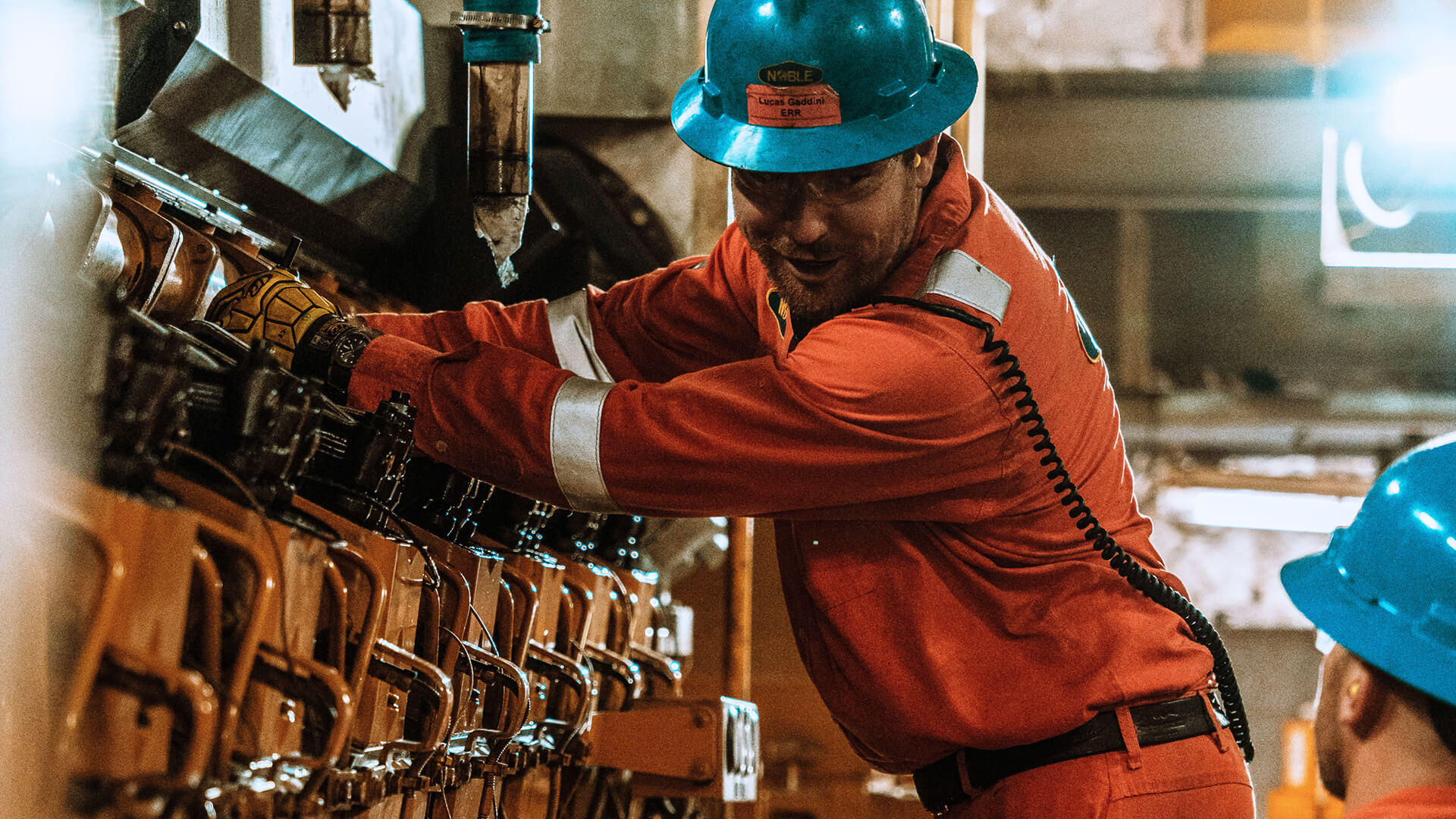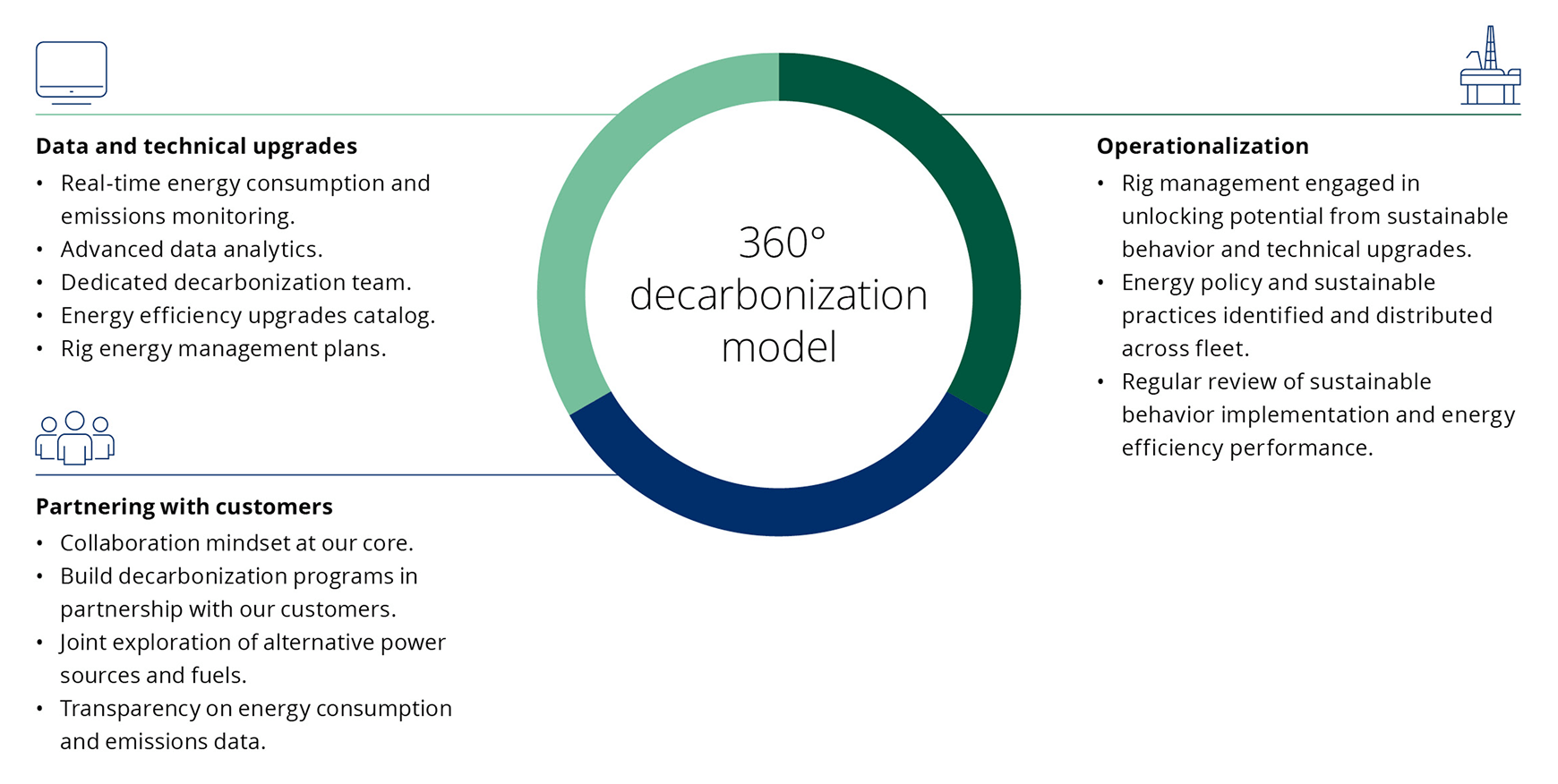
Noble’s deep dive into using green methanol in offshore operations
Integrating green methanol into offshore operations can reduce the environmental footprint and contribute to broader energy transition and decarbonization programs.
To reach decarbonization targets and comply with regulations aimed at reducing greenhouse gas (GHG) emissions, the offshore drilling industry must consider powering operations with low-carbon fuels instead of marine fuel oil, LNG and other conventional fuels. Using alternative low-carbon fuels, however, requires innovation and investment to retrofit existing assets and build new assets over time.
To understand the adaptations needed to operate an offshore drilling rig using an emerging low-carbon fuel, Noble relied on our 360-degree decarbonization model. In collaboration with a customer and a third-party design consultancy, Noble conducted a feasibility study of the safety, operational and feasibility aspects of upgrading a harsh environment jackup rig offshore Norway, using green methanol as a key component.

According to the Methanol Institute, green or renewable methanol can:
Cut CO2 emissions by up to
Reduce nitrogen oxide by up to
Eliminate sulfur oxide
and particulate matter emissions
Navigating the regulatory landscape
Our team started by meeting with stakeholders such as Class, Flag State authorities and local regulatory bodies to understand the regulatory landscape for the application of alternative fuels and if additional requirements would apply for offshore drilling units. In particular, we also needed to know if the green methanol rig concept would meet International Maritime Organization (IMO) expectations to reduce 20-30% of GHG emissions by 2030 to drive their 2050 net-zero scenario. All stakeholders agreed it would be feasible and that existing guidelines and regulations from Class and IMO would apply.
Assessing technical feasibility
Noble conducted an in-depth study of:
We also assessed the impact of adding green fuel engines, tanks and related equipment on the rig’s variable deck load capacity and operations.
The feasibility study concluded that it is possible to upgrade a rig to enable green methanol use,
at a considerable investment, and that more progress is needed to attain a reliable supply of green methanol. Based on the study findings, Noble developed a conceptual design of the world’s first green methanol drilling rig.
Integrating green methanol into offshore operations can reduce a company’s environmental footprint and contribute to broader energy transition and decarbonization programs. Noble continues to apply our 360-degree decarbonization model to implement data and technical upgrades, partner with customers and operationalize solutions to achieve a Sustainable Energy Future.
Noble 2024 Sustainability Report
For a deeper dive, explore the full PDF report with more extensive insights and details.
